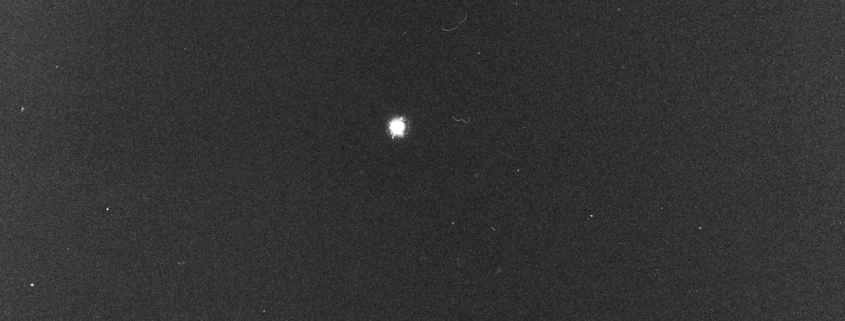APPROXIMATIVE SINGULARITY
Ciprian Ciuclea
Curator: Cătălin Gheorghe
STATEMENT
What we know will never tell us everything and the truth to the end. What we can live in the atmosphere of our aesthetic relationship with technology can encourage us to feel the experience of the discovery. What seems to be real, trans-sensorially perceived through optical instruments, could be a circumstantial effect of a singular modification. What follows from our reaction to the situation of an approximative encounter can reconfigure the interferential identity in the tension to live to the boundary between the causality of the terrestrial temporality and the modality of the cosmic spatiality.
Contextualizing, the concept of “singularity” in its technological variant was borrowed from astrophysics. “Gravitational singularity” is considered, at least theoretically, as that point with a volume that tends to zero and a mass that tends to infinity. In other words, it is an infinite concentration point and a huge gravitational force. The black holes are supposed to have such a gravitational singularity in their center, being the area where Newtonian physics laws no longer apply. The concept of “singularity” has gradually penetrated various environments, including economic, sociological or philosophical ones. In 1958, in one of his interviews, mathematician John von Neumann spoke of the fact that accelerated scientific progress would lead to a kind of singularity beyond which life and the world, as we know them, can no longer exist. Subsequently, I. J. Good introduces the idea of ”intelligent explosion” which is now included in the concept of technological singularity. The concept was formally launched in 1993 by mathematician Vernor Vinge and then developed by Ray Kurzweil. At first sight, the ideas that revolve around this phenomenon seem to mark, somewhat, a complex of circumstances that can generate an apocalypse.
Analyzing a series of intersectional elements, in the margins of a mutual attraction of the scientific explanation and the poetic vision, Ciprian Ciuclea becomes interested in the sequential and qualitative use of technological elements in the process of obtaining information with a component that could be considered abusive, but also very subtle. Thus, he proposes the use of optical filters (IR cut, polarization filters, diffraction grating, OIII nebula filter and UHC) to deform the perceived optical reality. Combining them on the same focusing system alters successively the image obtained due to interference of the analyzed wavelengths. This is a visible process of defocusing, but there is also a critical line of reading the conscious and abusive use of technology with immediate impact. The use of optical systems makes it possible to compare real-time quality without post-processing the images. We can not speak in this case of a cosmeticisation of reality, but of deliberate manipulation of somewhat educationally mediated, similar to the scientific interest in publicly communicating the results that can be used to increase the chances of a determinative expansion of knowledge. In the case of Ciprian Ciuclea’s optical experiments, physical phenomena (with an optical character) are highlighted under conditions of exploitation of laboratory resources. The image viewed in the space of a visual installation could thus be perceived as an improbable landscape, which is both informatively plain and aesthetically ambiguous. Metaphorically, however, both in the (artifactualized) production of the works and in the (natural) reaction of their perception, an (approximative) apocalypse of the image is obtained.
The exhibition is installed in two locations, with a series of laboratory photos, multimedia objects, sound design, black hole concept simulation, cathode ray tube, light box and video projection in Borderline Art Space and a site specific sound installation in the vertical space of the Water Tower of “Al. I. Cuza” University of Iasi.

